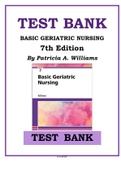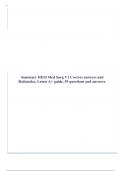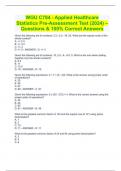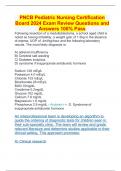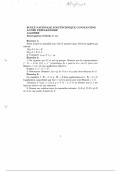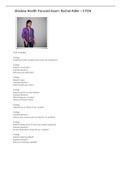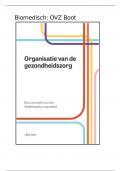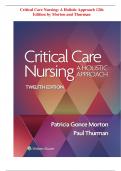Exam (elaborations)
Test Bank - Basic Geriatric Nursing 7th Edition by Patricia A. Williams, (All Chapters Included 1-20)
Test Bank For Basic Geriatric Nursing 7th Edition by Patricia A. Williams 1: Trends and Issues 2: Theories of Aging 3: Physiologic Changes 4: Health Promotion, Health Maintenance, and Home Health Considerations 5: Communicating With Older Adults 6: Maintaining Fluid Balance and Meeting Nutritional...
[Show more]
